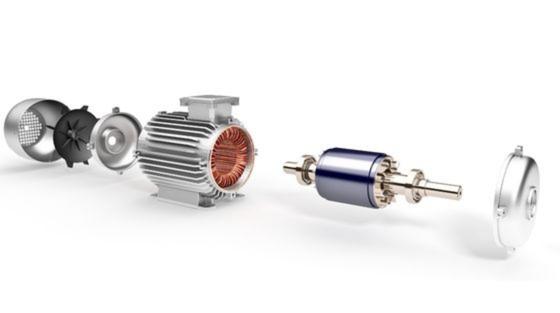
In this blog, you will learn everything about electric vehicle components. Electric vehicle sales in India are expected to soar to 39% of total vehicle sales in India in CY27 from just 1% in CY21, as per this report by EY. This, along with countless other statistics, studies, and industry trends, gives us an idea of where the automobile industry is headed. The ongoing and upcoming rise and trends will birth numerous new EV companies.
With numerous startups and MSMEs conducting extensive R&D into newer models and EV types, we would even get to see modifications in EVs that operate today.
However, the basic electric vehicle components of all types of EVs (including e rickshaw parts) are the same, and anyone looking to start and scale an EV company must know about them. They basically define how electric vehicle works.
Core Electric Vehicle components
Here is a list that tells you everything you need to know:
Battery pack
Battery is the equivalent of a fuel tank in an IC engine. It acts as the storage house for energy and provides electric flow after getting a signal from the controller. Examples are lithium-ion battery, nickel-metal hydride, lead acid, and other batteries.
Electric motor
Like an engine in an IC engine, the motor provides energy to the wheels. The best part is that motors are super quiet and come with minimal vibration after they convert electrical energy to kinetic energy.
Power inverter
The inverter converts the battery’s direct current (DC) into alternating current (AC), which is used by the motor. It also then converts the AC current from the braking system into DC current that recharges the battery.
DC-DC Converter
It converts the higher voltage DC current into lower voltage DC current that is used to power the smaller EV accessories. Small accessories cannot intake high-voltage DC current. It is also used to charge the auxiliary battery.
Auxiliary batteries
These batteries provide energy for the smaller electric vehicle components. It is used as an alternative energy source and prevents other parts (than the main motor) from being dependent on the main battery.
Thermal system (cooling)
Just like an IC engine, the thermal cooling system helps maintain an operating temperature for the motor, controller, and all other electric vehicle components. It prevents overheating of parts while you are operating the EV.
Transmission
It works similar to how transmissions work in an IC engine. The transmission transfers the energy from the motor to the wheels using a gearbox.
Charge Port
It is used to charge the battery. It gets connected to an external source, e.g., getting your EV charged at home or a station.
Onboard charger
The current received from an external source in the charge port is from an AC supply, like your home. The onboard charger converts that AC flow into DC supply for the battery.
Controller
Last but not least, the controller regulates the flow of electricity in the EV. Based on the input of the pedal (that comes from the driver), the controller determines the voltage frequency to be provided to the motor.
Non-core electric vehicle components
All the components listed above are the core components of an EV. Numerous other non-core components are required for different functionalities within an EV. Here are some of the most important ones that you should know of:
Chassis
It is the skeleton of the EV and forms the base to hold all EV components together. It needs to be rigid and strong to hold all parts together and maintain superior safety standards.
Charger Enclosure
It allows locking and unlocking of the charge port area along with protecting it from getting damaged by different environmental factors. It also helps maintain safety for the users.
Spline Shaft
It helps transfer torque from one component to another. It has grooves/teeth which match with their counterparts simultaneously to facilitate torque transmission.
Gear Box Housing
It represents a protective housing that surrounds and protects all components of a gearbox from damages and other environmental factors.
Motor Mounting
It protects other components of an EV from the vibrations generated by the motor. It keeps the structures stable and helps protect from different kinds of shocks and vibrations.
Body Panels
They form the complete body structure of the EV and protect body parts from all kinds of external factors. One of the most important roles of the body panels are to protect the riders/drivers from all kinds of environmental factors.
Battery Box
It holds the battery and its components together in a safe and robust casing. From safety to sustainability, the materials and structure of the battery box has to be customized to suit the needs of the particular EV.
Karkhana.io – best EV component manufacturer
Karkhana.io has helped numerous EV startups and companies build non-core EV components with a result-driven methodology. These include buymyEV (manufacturers of EVs) for manufacturing of E2W chassis, MAGNES motors for manufacturing of Electric Go-kart chassis, EXPONENT for manufacturing of micro channel weldment amongst others.
Because of the EV manufacturing sector being in the nascent stages of growth, finding the right manufacturer for your EV components is a challenge. We have simplified this process with a manufacturing ecosystem built and designed for startups and companies.
We help companies with everything starting from quick design validation, manufacturability feedback via our expert in-house engineers, project management, transparent pricing, quality checks and logistics. The process also includes regular quality checks, audits of suppliers, order updates and more.
Want to experience our processes and barrier-free manufacturing? Fill up the form below to get in touch.










